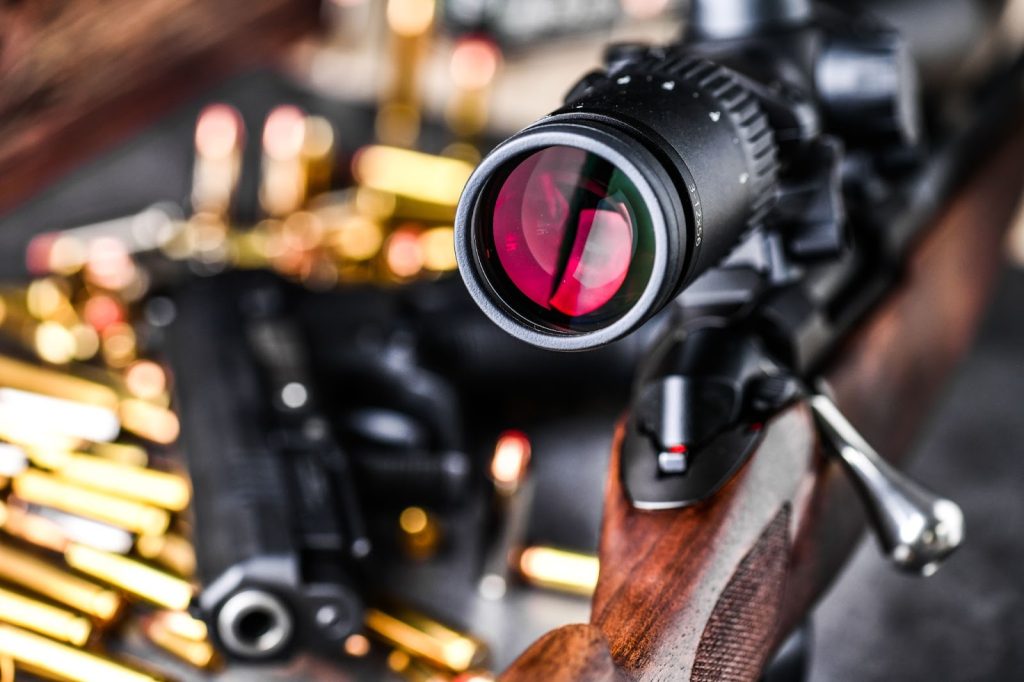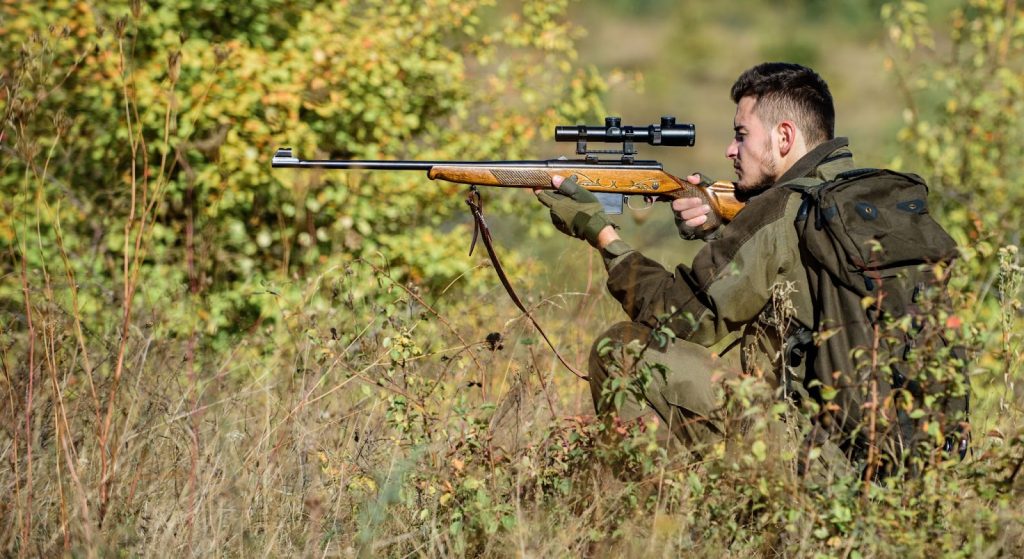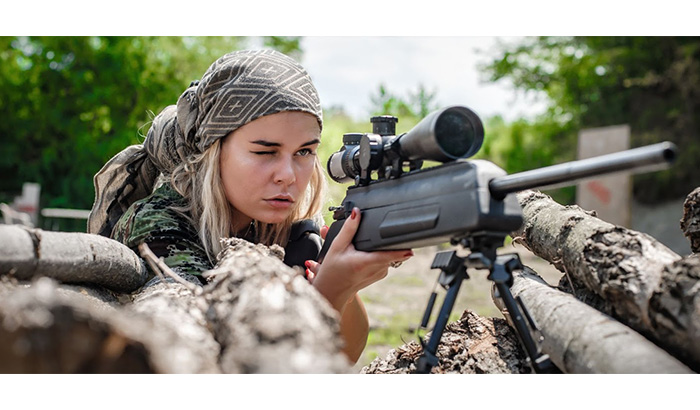The stage is set for a long-range guided hunting trip as the sun peeks over the horizon and the early morning mist clings to the distant hills. Out here, where the game is wary, the terrain demands respect, and every detail counts — especially the clarity and precision of your optics.
Whether lining up a shot at a trophy elk across a windy ridge or scanning for a hidden whitetail deer among the autumn brush, the proper scope or binoculars can make all the difference. Long-range hunting isn’t only about patience and prowess; it’s about how well you can see the challenge ahead and meet it head-on.
Long-range hunting requires exceptional precision and accuracy. When your target is several hundred yards away, it becomes crucial to have the right optics to identify and shoot your prey confidently. Whether you’re an experienced hunter or getting started, choosing the right optics is crucial for a successful long-range hunting experience.
This guide will help you choose the best optics to turn distant dots into clear targets, enhancing your hunt with each focused gaze through your lens. Ready your gear and steady your hand — it’s time to look further than ever before, ensuring every shot counts and every hunt is as rewarding as it is challenging.
This article will discuss the different factors to consider when choosing optics for long-range hunting. Let’s get started.
Magnification
Magnification is one of the most critical factors to consider when selecting optics for long-range hunting. Higher magnification lets you zoom in on your target and make precise shots at longer distances.
However, it is essential to balance magnification and field of view. Optics with too high magnification can make it difficult to track moving targets and limit your field of vision. Opt for optics with adjustable magnification to have the flexibility to adapt to different shooting scenarios.
Choosing optics with a variable magnification range offers the versatility needed for various hunting situations, from wide open plains to dense forest environments. It’s important to remember that higher magnification requires a steadier hand or stable support to maintain accuracy, as the view can shake more with each slight movement.
Lens quality
Another crucial factor is the quality of the lenses in your optics. High-quality lenses provide clear, sharp, and bright images even in low-light conditions. Look for optics with premium coated lenses that reduce glare and improve light transmission, allowing you to see your target clearly.
Additionally, lenses with anti-fog and scratch-resistant features are important to consider, as they ensure durability and optimal performance in varying weather conditions. High-quality lenses can significantly enhance color differentiation and contrast, helping you distinguish the game from the surrounding environment more effectively.
This is particularly vital in complex landscapes where animals may blend into the background, requiring superior optical clarity to spot and accurately target them.
Objective lens size
The objective lens size plays a significant role in determining the light-gathering capabilities of your optics. A larger objective lens allows more light to enter the scope, resulting in brighter and clearer images, especially in low-light conditions.
However, it is important to note that larger objective lenses can make your optics heavier and bulkier. Consider the trade-off between light-gathering capabilities and portability when selecting the optimal objective lens size for your long-range hunting adventures. The size of the objective lens not only affects brightness and clarity but influences the overall field of view.
A wider objective lens can offer a broader visual range, which is advantageous when scanning large areas for potential targets. Additionally, the bulk of larger lenses might require more robust mounting solutions, which could affect the balance and handling of your firearm.
When choosing the size of your objective lens, consider the typical hunting conditions you face; dim environments like dawn or dusk benefit more from larger lenses, while midday hunts might not necessitate as much light intake.
Reticle type
In your optics, the reticle, or crosshair pattern, helps you aim accurately at your target. When it comes to long-range hunting, choosing a reticle that suits your shooting style and preferences is crucial. Classic duplex reticles are popular for their simplicity and versatility.
Additionally, some optics offer specialized long-range reticles, such as mil-dot or BDC (bullet drop compensator), which provide aiming points for different distances. Choose a reticle that you are comfortable with and aligns with your shooting needs.
A reticle with illumination can be a game-changer in low-light conditions, often encountered during dawn or dusk hunts, enhancing visibility and precision. Make sure the reticle’s thickness doesn’t overpower the target at longer ranges, as a fine line between too bold and too subtle can mean the difference between a miss and a successful shot.

Durability and weather resistance
Long-range hunting often requires navigating harsh environments. Therefore, choosing optics that are durable and weather-resistant is essential. Choose optics made from rugged materials like aircraft-grade aluminum or magnesium, designed to withstand the rigors of hunting.
Optics with a sealed and nitrogen-filled construction are also important, as they are waterproof and fog-proof, ensuring that your optics will remain clear and functional even in challenging weather conditions.
Adjustability and turret systems
Long-range hunting often involves precise adjustments for windage and elevation. Look for optics that have easy-to-use and reliable turret systems for making these adjustments.
Some optics offer tactical-style turrets that allow quick and accurate changes on the fly, while others have exposed or capped turrets that provide a more streamlined and protected design.
Consider your shooting style and preferences when choosing the adjustability and turret system that suits you best. The tactile feedback from turrets can greatly enhance your shooting accuracy, as clear clicks help make precise adjustments without the need to confirm each change visually.
For hunters who frequently change locations and face varying environmental conditions, having a zero-reset feature can be invaluable, allowing you to return to your original sight settings quickly. Choosing turrets that are marked in a way that is easy to read and understand is also beneficial, reducing setup time and potential errors in high-pressure situations.
Some advanced turret systems feature a locking mechanism to prevent accidental adjustments. Once you have dialed in your settings, they remain unchanged until you decide otherwise.
Size and weight
The size and weight of your optics can significantly impact your hunting experience. While larger and heavier optics may offer better performance and features, they can also be burdensome and cumbersome to carry.
Consider the balance between performance and portability when selecting your optics. Look for compact, lightweight options that still offer the necessary features and durability for long-range hunting.
Using lighter optics ensures you can move more swiftly and comfortably during long treks in search of game, enhancing your overall agility and endurance in the field. It’s also wise to test different models to see how they feel in hand, as even a slight increase in weight could affect your ability to hold steady during critical moments.
Budget
Consider your budget when choosing optics for long-range hunting. Optics can vary significantly in price, with high-end models often boasting advanced features and superior optical performance. However, there are also more affordable options that can still provide reliable performance for long-range shooting.
It’s important to determine your budget and prioritize the features that are most essential to you. Consider what features are must-haves and where you are willing to compromise. Investing in quality optics can greatly enhance your hunting experience and improve your accuracy and success in the field.
Choosing the right optics recap
You can find optics that best suit your needs and preferences by evaluating your shooting style, magnification range, reticle options, durability, adjustability, size and weight, and budget.
Remember to research and test out different options before making a final decision to ensure that you make an informed and confident choice.
Consider the environmental conditions where you typically hunt, as this will influence your choice of optics. If your guided hunting trip is often in wet or foggy conditions, look for waterproof and fog-proof scopes to ensure clear visibility no matter the weather.
The right optics match your hunting style and withstand the elements, allowing you to focus on the hunt without worrying about equipment failure. Testing your optics under similar outdoor conditions can give you confidence in their performance when it really counts.

Choose R & K Hunting to guide your long-range hunting adventure!
Partnering with R & K Hunting connects you to a wealth of knowledge from guides who deeply understand wildlife behavior and optimal hunting locations for long-range targets. These experts devote countless hours in the wilderness, significantly boosting your chances for a successful and rewarding guided hunting trip.
R & K Hunting Co specializes in custom hunting expeditions tailored to suit the specific needs of every hunter. Whether you are new to the sport and eager for your first big game experience or a seasoned hunter aiming to enhance your skills with long-range shots, we provide the guidance and support you need.
Opting for R & K Hunting gives you access to top-tier hunting grounds and expert advice on choosing the right optics for long-range hunting, ensuring each adventure is ethical and fulfilling.
Get ready to step into the great outdoors and experience a hunting expedition unlike any other. With R & K Hunting, you’re not merely embarking on another hunt; you’re opening the door to a world of precision, challenge, and learning. Get started today!

